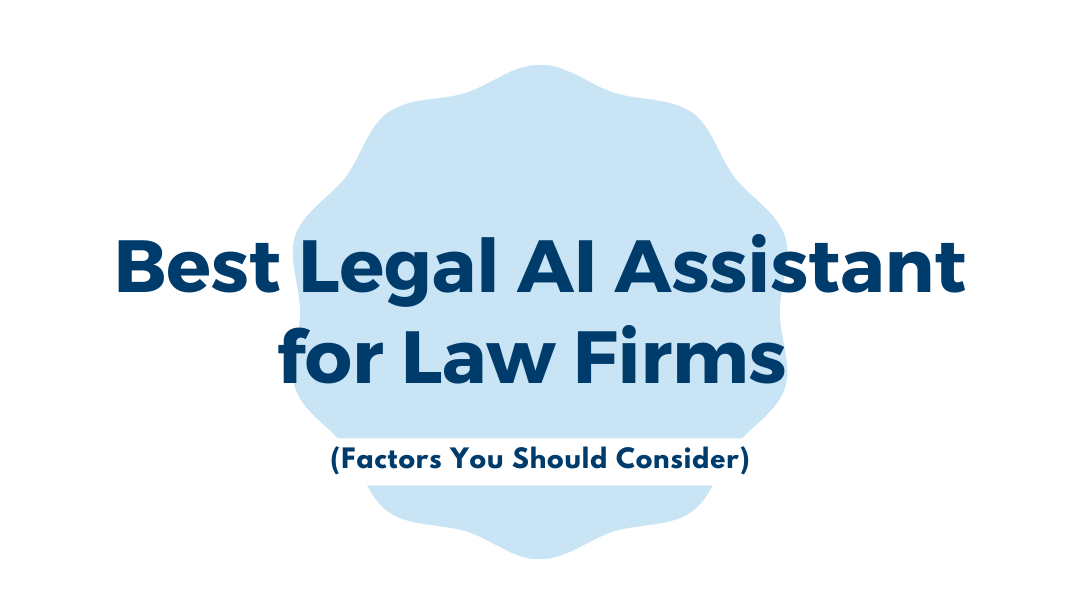Key Points Law Firms Should Consider When Adopting Legal AI Research Tools, Based on Stanford’s Research Paper

Related Posts
Key Points Law Firms Should Consider When Adopting Legal AI Research Tools, Based on Stanford’s Research Paper
The recent release of Stanford’s paper on the reliability of leading AI legal research tools has set a frenzy, particularly among lawyers and firms who are considering adopting these tools into their workflow. The paper highlights significant issues, including the high rates of hallucinations—AI-generated outputs that are demonstrably false or misleading—which can severely impact legal practice.
So, we read through the paper to distill the key insights and provide a comprehensive guide for law firms. This will help you understand the critical factors to consider, from ethical responsibilities to practical verification processes, ensuring your firm can leverage legal AI tools effectively.
But before that, let’s try to ⬇
Understand What Is Meant by Hallucinations in Legal AI Tools & Its Impact


Definition of Hallucinations
Hallucinations in AI occur when the system generates outputs that are demonstrably false or misleading. These inaccuracies can arise from the AI misinterpreting data or generating content without a factual basis.
Impact on Legal Practice
For lawyers, the implications of AI hallucinations can be severe. Misleading outputs can lead to incorrect case law citations, misinterpretation of legal precedents, and flawed legal arguments. This can undermine the reliability of legal work and potentially harm clients’ interests.
Statistics on Hallucination Rates
Studies have shown that general-purpose language models, such as GPT-4, have hallucination rates ranging from 58% to 82% when tasked with legal queries. This high rate of error highlights the importance of using AI tools specifically designed and fine-tuned for legal applications.
Ethical and Professional Responsibilities of Lawyers
Model Rules of Professional Conduct:
Based on Rule 1.1 (Duty of Competence) lawyers are required to provide competent representation to their clients. This includes understanding and appropriately utilizing technological tools. AI for lawyers, must ensure they are knowledgeable about the technology’s capabilities and limitations.
Also, according to Rule 5.3 (Duty of Supervision) lawyers must supervise non-lawyer assistants, which extends to AI tools. They must ensure that these tools are used consistent with professional standards and that any outputs are thoroughly vetted.
Bar Association Guidance:
Bar associations in states such as New York, California, and Florida have issued guidance on the ethical use of AI. They urge lawyers to understand both the benefits and the risks associated with AI tools. Staying informed about these tools’ empirical performance and ethical implications is essential for maintaining professional integrity.
Practical Considerations for Legal Practice
Manual Verification of AI Outputs: Due to the potential for hallucinations, it is crucial for lawyers to manually verify AI-generated outputs. This process ensures the accuracy and reliability of legal research and documents. Steps for verification include:
- Cross-referencing: Compare AI outputs with reliable legal databases and primary sources.
- Critical Analysis: Evaluate the logical consistency and relevance of AI-generated content.
- Peer Review: Have colleagues review AI outputs to identify any inaccuracies or inconsistencies.
Comparing AI Tool Performance: Not all legal AI tools are created equal. Performance can vary significantly in terms of accuracy, responsiveness, and usability. When selecting AI tools, consider the following:
- Accuracy: Choose tools with a track record of low hallucination rates and high precision in legal research like NexLaw.
- Responsiveness: Evaluate how quickly and effectively the tool can process and respond to legal queries.
- Usability: Consider the tool’s user interface and integration capabilities with existing legal software.
Recommendations for Selecting AI Tools:
- Pilot Programs: Implement pilot programs to test AI tools in real-world scenarios before full-scale adoption.
- Vendor Transparency: Work with vendors who are transparent about their tools’ capabilities, limitations, and error rates.
- Continuous Training: Ensure that lawyers and staff receive ongoing training on using AI tools effectively and ethically.
As AI transforms the legal industry, law firms must adopt AI tools with a critical eye, understanding risks like hallucinations and adhering to ethical standards. NexLaw mitigates hallucinations and enhances the Legal AI Trial Copilot‘s utility. By staying informed and proactive, law firms can leverage AI benefits while maintaining high professional standards.
If you’re curious about the capabilities of NexLaw, book a demo and try us out for free!
Interested In Features Like This?
Received Complimentary access to our resources and a personalized live demo tailored to your needs


Summer Wong
Content creator & copywriter @ NexLaw









































